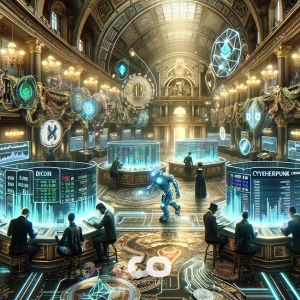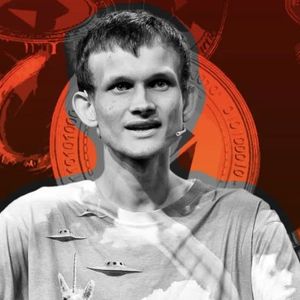The creator of the Bitcoin growth prediction model called Stock-to-Flow (S2F) has criticized Ethereum and mocked the project's founder Vitalik Buterin. The crypto enthusiast under the pseudonym PlanB stated that a significant portion of ETH is allegedly distributed by pre-mining, and the project itself is extremely centralized. However, many commenters on Twitter disagreed with this opinion, and his brainchild S2F really failed. Conflict with Vitalik Buterin On April 20, PlanB reposted Buterin's tweet from June 2022. In the previous post, the developer wrote that the S2F model ”doesn't look good right now,” and also voiced arguments against focusing on its predictions. It's actually Ethereum that's looking bad right now. I know it's not decent to gloat and all that, but I believe that shitcoins like ETH that are centralized and distributed by pre-mining, use PoS instead of PoW, change the rules of issuing an offer at the snap of a finger - are hurting the industry and deserve their criticism. Thus, the user copied the structure of Buterin's tweet and mocked him. In a separate tweet, PlanB noted that a full-fledged node of the Ethereum network requires nine terabytes of disk space to run and therefore he ”can't run it” on his hardware. Apparently, he was referring to the Ethereum archive node, which according to real network users requires about 21.8 terabytes when using the Geth client. A full-fledged Ethereum node on the Geth client with old state pruning on standard settings requires 1.28 TB. Such a node does not have access to all information about the blockchain and cannot generate Merkle proofs for old blocks, which limits its ability to research and find bugs. Nevertheless, such nodes can fully verify blocks and transactions, and thus are somehow suitable for blockchain operation and security. Full-fledged Bitcoin nodes require about 700 gigabytes of disk space and significantly less computing resources. This makes it easier to run nodes, increases their total number and promotes greater decentralization of the network. What is Stock-to-Flow? However, not all commentators found Efirium's criticism valid. For example, Trugard CTO and co-founder Jeremiah O'Connor stated the following. PlanB's opinion is a classic example of a Bitcoin maximalist's point of view. Loud, opinionated and without half of the picture. O'Connor explained that Ethereum and Bitcoin serve different functions. He noted that ”Ethereum's nodes are larger and more complex, as ETH is not just digital gold, but a full-fledged global computer.” The expert also admitted that dependence on centralized data providers like Infura is a problem for Ethereum. However, he added that there are trade-offs for centralization in every ecosystem, and network developers are already working to reduce it. Here is a comment on the topic: Calling ETH a scam just because it is not Bitcoin is the same as calling smartphones a scam because they are not corded phones. The expert noted that these are different tools with different tasks. He called Bitcoin a ”reliable means of storing value,” while Ethereum is a ”tool for developers,” thus emphasizing the fundamental value of projects. PlanB also questioned Buterin's influence on the development of Ethereum, calling him a ”weak link” in the altcoin community. That view is also easily refuted: this week, Ethereum Foundation member Tomasz Stanczak reported that Buterin is stepping away from day-to-day operations, to focus on long-term research. Which means his efforts in more pressing areas are not required. Finally, another PlanB argument is the 2016 DAO hack, where after the incident itself, the Ethereum network rolled back transactions and thus canceled fresh user activity. It's worth noting that Bitcoin also had a similar incident in its history. On August 15, 2010, a transaction was created due to a bug that allegedly involved 184 billion BTC in block number 74638. Satoshi Nakamoto, who was then still actively involved in the development of the main cryptocurrency, along with other programmers, released an update, rolling back the network to block 74637 and fixing the consequences of the incident. That is, Bitcoin experienced a kind of blockchain rollback at an early stage as well. The S2F model, proposed by PlanB almost a decade ago, is used to predict the value of Bitcoin based on its scarcity. It compares the amount of an asset in circulation (stock) to its annual issuance (flow). The higher the ratio, the more scarce the asset is considered to be. For Bitcoin, the model takes into account the reduction in the reward for mining during the halving procedure every 210,000 blocks or four years, and makes the prediction that the price of BTC should increase significantly as scarcity increases. However, over time, the model began to seriously outperform the actual market situation. After the 2020 halving, Bitcoin did increase in value, but already in 2022-2023, the price of BTC deviated significantly from the projected S2F values towards lower values. Critics point out that the model does not take into account macroeconomic factors, institutional demand, regulatory risks and overall market conditions. In addition, it is important to realize that the key tool for changing the rate of Bitcoin and other assets is the demand of buyers, not the trivial rate of new coins. The bottom line As a result, Bitcoin turned out to be a less predictable asset than anticipated and depends on a multitude of factors unrelated to issuance. This is why even PlanB himself later admitted that S2F no longer reflects the real market dynamics of the main digital asset. It is ironic enough that under such circumstances he is ready to criticize the actions and opinions of other well-known personalities in crypto, who have done much more for the development of the sphere than he has.


















